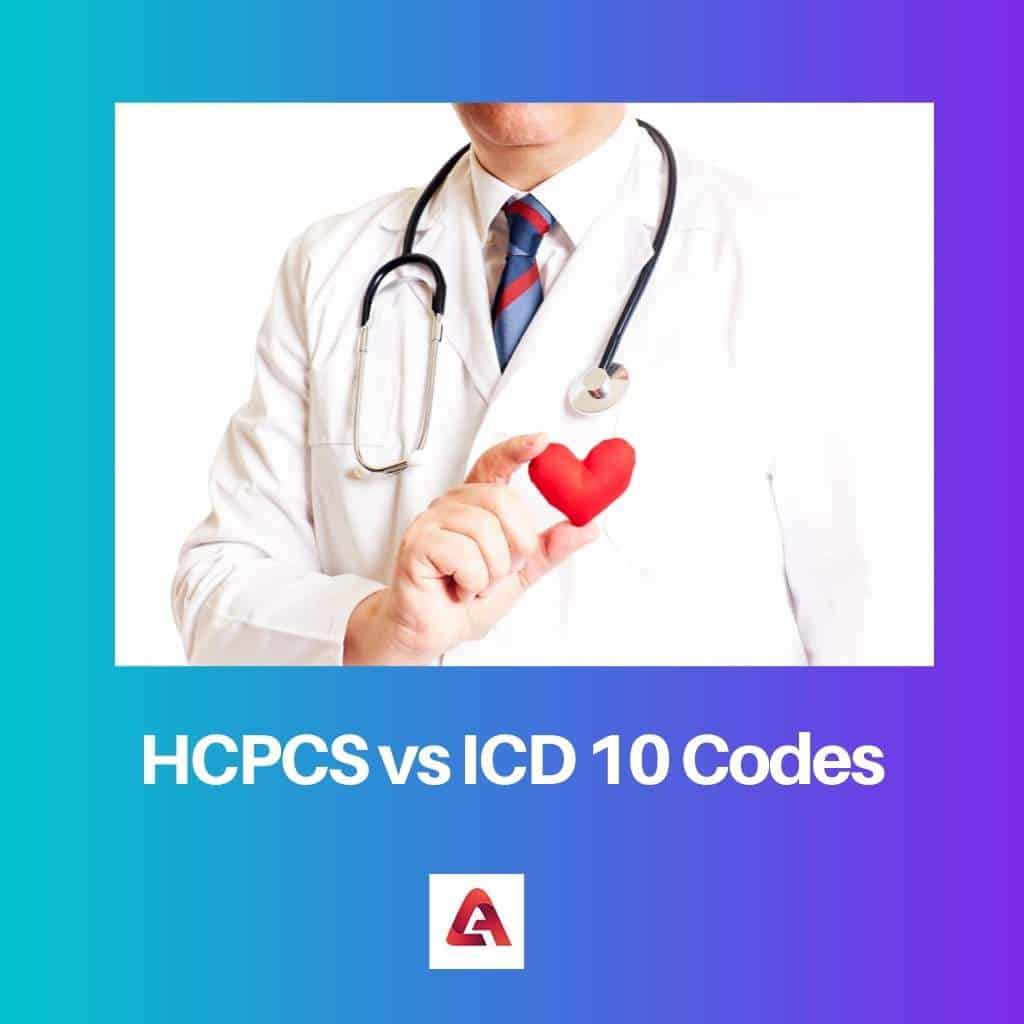HCPCS and ICD 10 Codes are both very well known worldwide as different sets of medical codes which play an important role in the field of medical science and biology.
Because of this, since both of them play an important role in the industry and also appear in the same field, many people make the mistake of assuming they are the same. However, there are some points of difference between them.
Key Takeaways
- HCPCS codes classify medical procedures and services for billing purposes, while ICD-10 codes diagnose illnesses and injuries.
- HCPCS codes are primarily used in the United States, whereas ICD-10 codes are employed internationally.
- HCPCS codes consist of letters and numbers, while ICD-10 codes are alphanumeric and more detailed.
HCPCS vs ICD 10 Codes
The difference between HCPCS and ICD-10 Codes is that HCPCS was created much later than ICD-10 Codes with better development, and both are managed by different medical organizations. Among them, the first one is by U.S. Government, known by the name Centres for Medicare and Medicaid Services (CMS). In contrast, the second one for the same is by the World Health Organization (WHO).

Since its creation in 1978, HCPCS codes have been required in medical fields to provide a standard medical coding system for medical equipment as well as medical services.
HCPCS was initially used voluntarily by medical entities, but after the implementation of HIPAA or also known as the name Health Insurance Portability and Accountability Act, since 1996, transaction codes were reported in HCPCS codes.
On the other hand, ICD 10 had its first inception in 2015, and it is globally managed by WHO (World Health Organization) as a diagnostic code for diseases and other medical conditions.
There are two parts to this ICD 10 code. Amongst them, one is CM which stands for Clinical Modification, and the other part is Procedure Coding System.
Comparison Table
| Parameters of Comparison | HCPCS | ICD 10 Codes |
|---|---|---|
| Management and Implementers | U.S. Government Centres for Medicare and Medicaid Services (CMS). | World Health Organization (WHO) |
| Date of Formation | It was incepted since 1978. | ICD 10 was first implemented in 2015, though the previous versions of ICD took place much earlier. |
| Diagnostic | Diagnostic HCPCS Level II focuses on codes that are used outside of the doctor’s office, such as ambulances and wheelchairs. | Physicians do not use ICD-10-PCS to register their services, such as ambulance or inpatient visits. ICD-10-PCS is not used by physicians to report their services, including ambulance or inpatient visits. |
| Selection of Codes | Used by providers to select codes based on the patient’s current and ambulatory setting. | Providers select codes according to patient’s medical records. |
| Divisions | HCPCS is broadly divided into HCPCS Level I and HCPCS Level II. | ICD-10 Code is broadly divided into ICD-10-CM (Clinical Modification) and ICD-10-PCS (Procedure Coding System) |
What is HCPCS?
HCPCS (Healthcare Common Procedures Coding System) was first developed in the year of 1978. This was done under the supervision of the United States, specifically by the Department of Health and Human Services.
These medical codes are used mostly to report supplies, medical equipment, and devices that the patients are provided with. It is also used as a supplement to CPT (Current Procedural Terminology) medical codes.
HCPCS has two levels in its medical coding system terminology. The HCPCS Level I codes sometimes are also referred to by the name of the Current Procedural Terminology coding system. But in the case of HCPCS Level II codes, they are commonly referred to as “regular” HCPCS codes.
Level I of HCPCS is comprised mainly of CPT, a wholesome numeric coding system formulated by the American Medical Association.
This coding system is more consistent and descriptive, and it is largely used by physicians and other healthcare professionals to identify a variety of medical services. These codes are also used when a human health insurance program is billed.
Level II wholly comprises a standard coding system that identifies health services, health supplies, and even health products apart from CPT. For example, we can take the case of ambulance service in the medical field.
Services mainly required outside a physician’s office and which are not included in the CPT codes are mainly the Level II of the HCPCS coding system. Care of medicinal products is also taken care of by these codes, as well as medical equipment, which are not included in level I.

What are ICD 10 Codes?
International Statistical Classification of Diseases and Related Health Problems is the international standard for the report of diseases as well as health conditions, which includes features of disease monitoring, symptoms, external causes of injuries, and health diseases.
The latter is also referred to as ICD-10.
There are 2 major divisions of the ICD 10 code as well. One is the ICD-10-CM (Clinical Modification), whereas the other one is the ICD-10-PCS (Procedure Coding System). Both of them are managed and implemented by the World Health Organization, known by the world WHO.
ICD-10-CM, Clinical Modification, is widely utilized for diagnosis coding for almost every branch of medicine practised all over the world. It caters to around 68,000 codes. It is developed and maintained by the office of the CDC.
The latter stands for Centers for Disease Control and Prevention (CDC). These codes are primarily selected and evaluated based on the documentation, which is provided in the medication records of the patient.
ICD-10-PCS, where PCS means Procedure Coding System, is used extensively and specifically for the medical codes of hospital inpatient procedures. It caters to around 76,000 codes.
It is also developed by the CMS and is maintained with them. It is kept under great supervision. Physicians do not use these code sets while reporting their services.

Main Differences Between HCPCS and ICD 10 Codes
- Different Management and Implementers, CMS for HCPCS, and WHO for ICD-10 Codes.
- The date of formation of the HCPCS code takes us back to 1978, whereas the ICD-10 Code of WHO is quite new. A new version was implemented in 2015 after the ICD-9 Code.
- HCPCS Level II mainly emphasizes codes outside the physician’s office, such as ambulances and wheelchairs, whereas ICD-10-PCS is not used by physicians to report their services, including ambulance or inpatient visits.
- HCPCS is used by providers to select codes based on the patient’s current and ambulatory setting. Howsoever, ICD-10 providers select codes according to the patient’s medical records.
- HCPCS is separated into two levels. The first segregation is HCPCS Level I and HCPCS Level II. Whereas the other segregation, ICD-10 Code, is further divided into two levels. One of the latter is ICD-10-CM (Clinical Modification), and the second one is ICD-10-PCS (Procedural Coding System).




